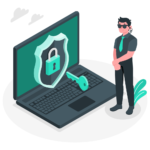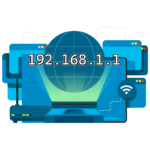How to Set Up a Secure Home Wi-Fi Network
In today’s digital world, having a secure home Wi-Fi network is more important than ever. With countless devices connected to the internet, from smartphones and laptops to smart TVs and home assistants, ensuring that your network is protected from unauthorized access is crucial. A secure home Wi-Fi network not only safeguards your personal data but also prevents cybercriminals from exploiting your internet connection.

This step-by-step guide will walk you through the essential steps to set up a secure home Wi-Fi network, providing peace of mind and a safe online environment for your household.
1. Choose a Strong Wi-Fi Password
One of the simplest yet most effective ways to your secure home Wi-Fi network is by setting a strong password. A strong Wi-Fi password should be:
- Long: Aim for at least 12-16 characters.
- Complex: Use a mix of uppercase and lowercase letters, numbers, and special characters.
- Unique: Avoid using easily guessable information, such as your name, address, or common phrases like “password123.”
A strong password ensures that only authorized users can connect to your network, keeping out unwanted guests.
2. Change the Default Router Settings
When setting up your secure home Wi-Fi network, one of the first things you should do is change the default router settings. Many routers come with default usernames and passwords that are easily accessible online. To change these settings:
- Log into your router: Open a web browser and enter your router’s IP address (often found on the router itself or in the manual). Log in using the default credentials.
- Change the default username and password: Go to the router settings and create a new, strong password for the router login.
- Change the network name (SSID): Give your Wi-Fi network a unique name that doesn’t reveal your identity or location.
3. Enable WPA3 Encryption
Encryption is a key element of secure home Wi-Fi security, as it protects the data transmitted over your network from being intercepted. WPA3 is the latest and most secure encryption protocol for Wi-Fi networks. If your router supports WPA3:
- Enable WPA3: In your router settings, look for the security options and select WPA3 as the encryption method.
- If WPA3 is not available: Use WPA2, which is still considered secure, but avoid WEP and WPA, as they are outdated and vulnerable.
4. Disable WPS and UPnP
Wi-Fi Protected Setup (WPS) and Universal Plug and Play (UPnP) are features designed to make connecting devices to your network easier, but they can also pose security risks.
- Disable WPS: WPS allows devices to connect to your Wi-Fi network by pressing a button or entering a PIN, but it’s susceptible to brute force attacks. Disabling WPS in your router settings can enhance security.
- Disable UPnP: UPnP allows devices on your network to discover and communicate with each other automatically, but it can be exploited by malware. Turning off UPnP in your router settings can reduce this risk.
5. Create a Guest Network
If you frequently have visitors who need to use your secure home Wi-Fi, consider setting up a guest network. A guest network is a separate network that provides internet access without giving guests access to your main network and devices.
- Set up a guest network: In your router settings, create a guest network with its own SSID and password.
- Secure the guest network: Use WPA3 or WPA2 encryption and set a strong password. Limit the bandwidth or access time if desired.
6. Enable Network Firewall
Most routers come with a built-in firewall that acts as a barrier between your home network and the internet, blocking unauthorized access and potential threats.
- Enable the firewall: In your router settings, look for the firewall option and ensure it is turned on.
- Adjust the settings: You can customize the firewall settings to enhance security based on your needs.
7. Update Your Router Firmware Regularly
Router manufacturers periodically release firmware updates to improve security and performance. Keeping your router’s firmware up to date ensures that you have the latest security patches and features.
- Check for updates: Log into your router’s settings and look for a firmware update option. Some routers may have an automatic update feature.
- Install updates: Follow the instructions to download and install the latest firmware.
8. Monitor Connected Devices
Regularly monitoring the devices connected to your network can help you spot any unauthorized users.
- Check connected devices: In your router settings, there is usually a list of connected devices. Review this list periodically to ensure only authorized devices are on your network.
- Block unknown devices: If you see an unfamiliar device, you can block it from accessing your network.
9. Use a VPN for Added Security
A Virtual Private Network (VPN) encrypts your internet traffic and hides your IP address, providing an additional layer of security for your online activities.
- Set up a VPN on your router: Some routers support VPN configuration, allowing all devices on your network to benefit from VPN protection.
- Choose a reputable VPN service: Ensure that your VPN provider offers strong encryption and a no-logs policy.
10. Regularly Review and Update Your Security Settings
Network security is an ongoing process, so it’s essential to review and update your settings periodically.
- Change your Wi-Fi password regularly: Update your password every few months to minimize the risk of unauthorized access.
- Review security settings: Periodically check your router settings to ensure that all security features are enabled and up to date.
Conclusion
Setting up a secure home Wi-Fi network is a crucial step in protecting your personal information and maintaining a safe online environment for your household. By following these steps, you can significantly reduce the risk of unauthorized access and enjoy peace of mind knowing that your network is secure.
At computerclimax.com, we are committed to providing you with the latest tips and guides to enhance your networking and communication experience. Stay tuned for more expert advice on keeping your digital life secure.
More to Explore
- Encountering issues with your Wi-Fi? Here’s how to troubleshoot common networking problems.
- Learn about the essential network protocols that ensure your Wi-Fi network functions securely.
- Follow these expert tips from Norton to enhance the security of your Home Wi-Fi network.
Related
Discover more from Computer Climax
Subscribe to get the latest posts sent to your email.






2 Responses